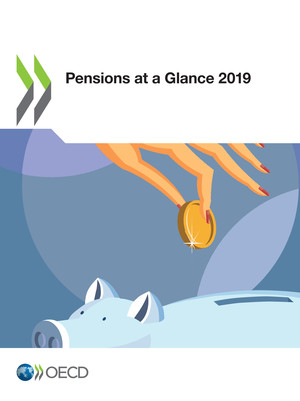copy the linklink copied!Current retirement ages
The rules for eligibility to retire and withdraw a pension benefit are complex and often reflect conflicting objectives. This is all mirrored in the different criteria for pension benefit withdrawal in different schemes. The 2018 average normal retirement age across OECD countries for an individual with a full career and who entered the labour market at age 22 was equal to 63.5 years for women and 64.2 years for men. The lowest normal retirement age applied in Turkey, equalling 48 and 51 for women and men, respectively. Iceland, Norway and, for men only, Israel and Italy had the highest normal age of 67. The largest gender difference was 5 years in Austria and Israel, and 4.2 years in Poland.
Table 4.4 shows the rules for both normal and early retirement for mandatory pension schemes. “Normal” retirement is defined as receiving a full pension without penalties. In some schemes, a pension can be claimed earlier, from the “early” retirement age onwards, implying benefit penalties that adjust for the longer retirement spell. The indicated ages are theoretical, applying to a person entering the labour force at age 22 and working without interruption. Chapter 6 looks at effective ages of labour market exit and employment rates at older ages.
Early age
A very early pension withdrawal is often only possible in occupational pension plans, like in Australia, France and Sweden at age 55. The non-occupational public schemes in both Korea and Lithuania allow receiving benefits before age 60. In the FDC schemes of Chile and Mexico and the DB scheme in the Slovak Republic, early retirement requires that the pension entitlements exceed a floor that is a proxy for the subsistence level. In the Slovak Republic, this is only possible within two years to the normal retirement age while no age condition apply in Chile and Mexico.
In general, most DB and points schemes specify an early retirement age next to the normal retirement age. Public DB or points schemes typically allow withdrawing a pension between 2 and 5 years earlier than the normal retirement age. In Greece and Luxembourg the early and normal retirement ages coincide for the case of an uninterrupted career from age 22.
Only in Austria (for women), Hungary, Turkey and the United Kingdom DB schemes currently do not include an early-retirement option. Basic pensions and targeted schemes often exclude such a possibility as well. Exceptions are found where the public pension consists of both a basic and a DB component, like in the Czech Republic and Japan.
In DC systems the benefit level automatically actuarially adjusts, through the annuity divisor, to the remaining life years at the age of first benefit claim. Therefore, only an early age is indicated in Table 4.4 for such schemes. However, the NDC schemes in Italy, Latvia and Poland still specify a standard retirement age indicated as normal retirement age in the table.
Normal retirement age
In many OECD countries, different normal retirement ages apply to different components of the overall retirement-income package. In particular, in those countries where targeted schemes have a higher eligibility age than the earnings-related scheme, the age of pension benefit withdrawal may in practice differ across earnings levels, : individuals with high earnings-related pensions might afford to retire before having access to first-tier components. Pension schemes in 14 countries still specify normal retirement ages by gender setting a lower age for women than for men.
The OECD defines the normal retirement age in a given country as the age of eligibility of all schemes combined, based on a full career after labour market entry at age 22. Women in Chile, for example, are eligible for the defined contribution component at age 60 but they are not eligible to the targeted pension before age 65. The latter is therefore recorded as their normal retirement age in 2018 (Figure 4.4).
In 2018, the OECD average normal retirement age was equal to 64.2 years for men and 63.5 years for women. It ranges from 48 for women and 51 for men in Turkey to 67 in Iceland, Norway and, for men only, Israel and Italy. The largest gender difference of 5 years are in Austria and Israel. In non-OECD G20 countries normal retirement ages tend to be lower, except for men in Argentina at 65. Gender differences exist in half of those countries but not in India, Indonesia, Saudi Arabia and South Africa.



